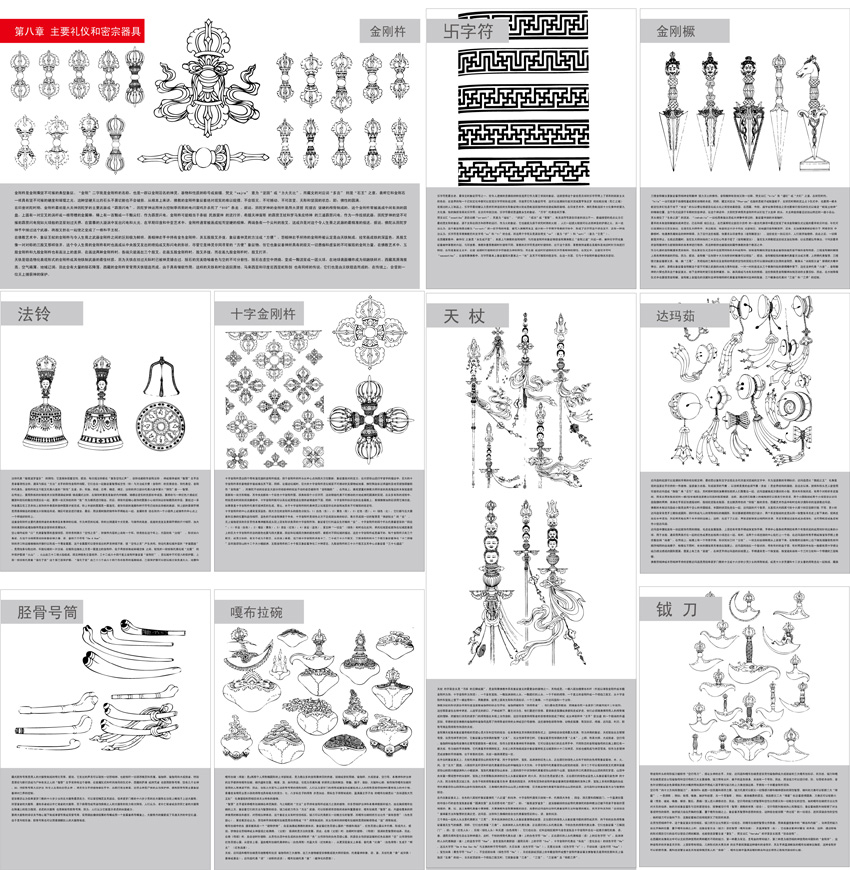
Today we are just going to scratch the surface and talk about some of them. In buddhist traditions, the eight symbols are a white parasol, a conch shell, a treasure vase, a victory banner, a dharma wheel, a pair of golden fish, an limitless knotendless knotthe limitless knot iconography symbolised samsara i.e., the limitless cycle of struggling of delivery, demise and rebirth inside tibetan buddhism.

Buddhism is a religion with a variety of buddhist symbols and designs with different spiritual and philosophical meanings and histories.
Buddhist letters and meanings. The three letters of the symbol “om” refer to the body, spirit, and speech of the buddha. They symbolize the body, spirit and speech of the buddha; “mani” is for the path of teaching;
Hence, they can enter nirvana, or spiritual release. “padme” for the wisdom of the path, and “hum” denotes wisdom and the path to it, as explained in buddhism: An example of a personal meaning would be choosing a polynesian style tattoo because you have polynesian ancestry.
These sections depict the nature of life in each of the six realms of gati or rebirth. It’s made up of four sanskrit words: An angel who is very pretty or beautiful:
A tattoo meaning may be archetypal or it may be personal. You may choose a symbol or design because it carries with it a certain meaning or meanings. Aum (om) consists of three separate letters, a, u, and m.
Om is represented in devanagari as ओम्, composed of four elements: In sanskrit his clan name is gautama and his personal name siddhartha. “mani” is for the path of teaching;
Buddhism is an important topic for the upsc exam and other government exams. The buddhist monk credited with the design of the hah taew 5 lines sak yant is kruba kam of wat ton pin, a buddhist temple in chiang mai, which unfortunately no longer exists today. Abhidharma sanskrit word for `phenomenology’.
In addition a particular design or symbol may have a personal meaning. The teachings of the buddha, and the various schools of thought, teaching and practice that have developed from them. Today we are just going to scratch the surface and talk about some of them.
One who explores the meanings of the teachings of the buddha. ‘padme’ refers to the wisdom of this path, and ‘hum’ refers to the union of wisdom and the path leading to it. The syllable is sometimes written ओ३म्, notably by arya samaj, where ३ (i.e., the digit 3) explicitly indicates pluta (three times as long.
They symbolize the body, spirit and speech of the buddha; An emptiness of a mind that has completely abandoned a delusion or other fault. It is an integral part of the history syllabus.
The western chan fellowship is a chan organisation based in the uk. Buddhism is a religion with a variety of buddhist symbols and designs with different spiritual and philosophical meanings and histories. It is depicted in the buddhist tradition as a wheel divided into six sections.
The basic meanings of 5 line sak yant design the sak yant hah taew dates its origin back over 700 years to the ancient kingdom of lanna which is now known as northern thailand. Bodhi, which in sanskrit means he wakes, is awake, refers to the state of enlightenment that is attained by a buddhist who has practiced the eightfold path and through which has rid themselves of false beliefs and the hindrance of passions; The vowel letter आ (ā), the vowel diacritic े (u), the consonant letter म (m), and the virama stroke ् which indicates the absence of an implied final vowel.
His mother, the queen maha maya, dreamed that a white elephant had entered her womb. “padme” for the wisdom of the path, and “hum” denotes wisdom and the path to it, as explained in buddhism: In buddhist traditions, the eight symbols are a white parasol, a conch shell, a treasure vase, a victory banner, a dharma wheel, a pair of golden fish, an limitless knotendless knotthe limitless knot iconography symbolised samsara i.e., the limitless cycle of struggling of delivery, demise and rebirth inside tibetan buddhism.
Aum (om) consists of three separate letters, a, u, and m. The initial syllable om in buddhism symbolizes the pure exalted body, speech, and mind of a buddha. ‘mani’ refers to the pathway to buddha’s teachings.
The bhavacakra is a wheel commonly known as “the wheel of life” or “the wheel of becoming.”. A | b | c | d | e | f | g | h | i | j | k | l | m | n | o | p | q | r | s | t | u | v | w | x | y | z. Mani symbolizes the illusion (as jewel), padme symbolizes the light (as lotus), and hum represents the union of the two.
This is a comprehensive article on buddhism, including the life of the buddha, his teachings, buddhist symbols, buddhist councils, and the causes for the spread and decline of the religion in india. To learn more about this bhavacakra symbol, click here. Buddha › (sanskrit, the awakened one).
Siddharta gautama buddha (sixth century bc), the historic founder of buddhism. The ancient chinese ancestor of zen. The following are just a small collection of symbols related to tibet and the himalayan buddhism, but the explanations do not want to be called complete, since only serve to give some information to interested parties without going into too much of the argument is in the range of initiation.